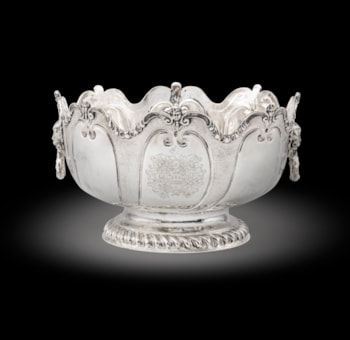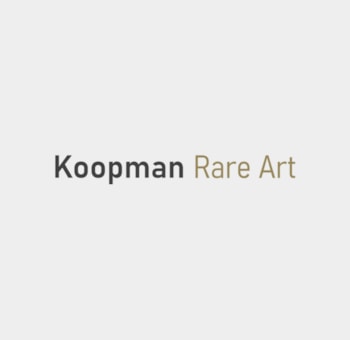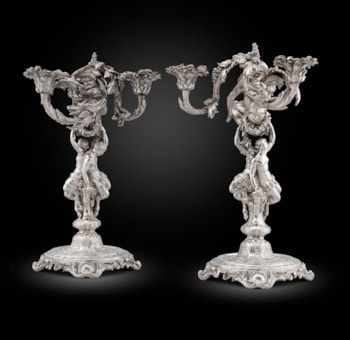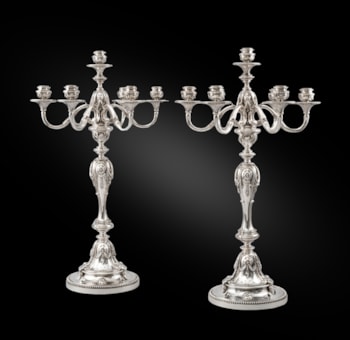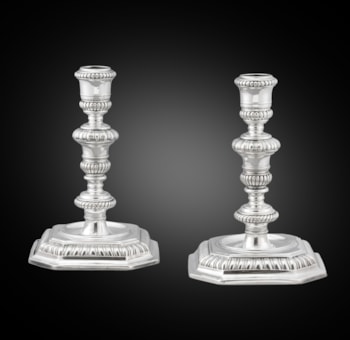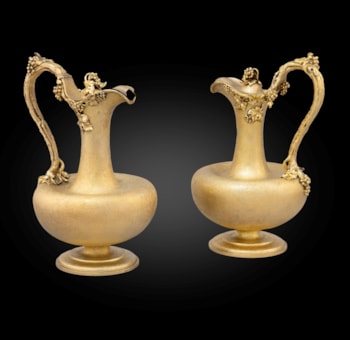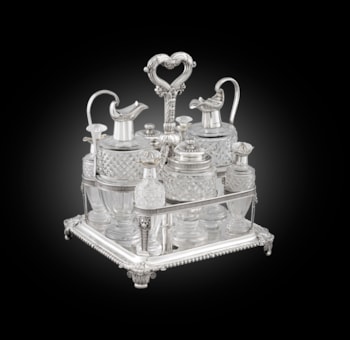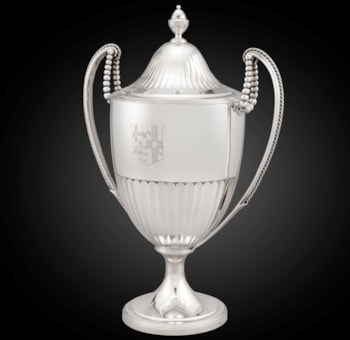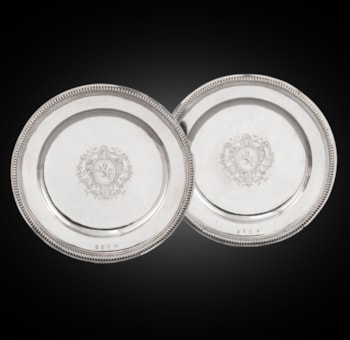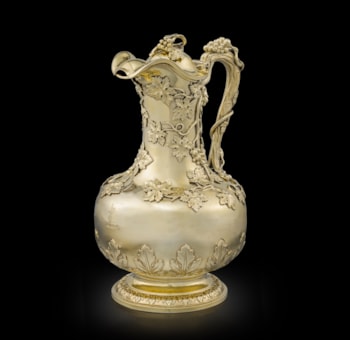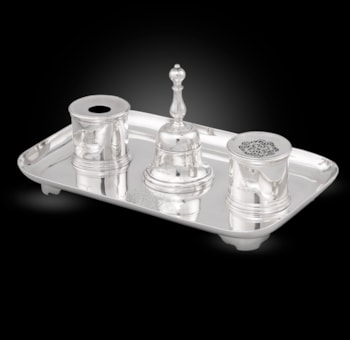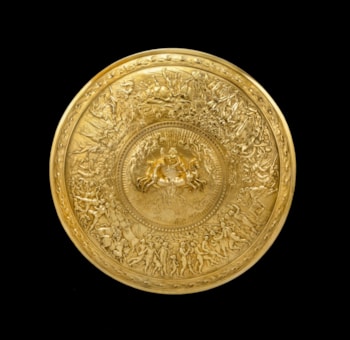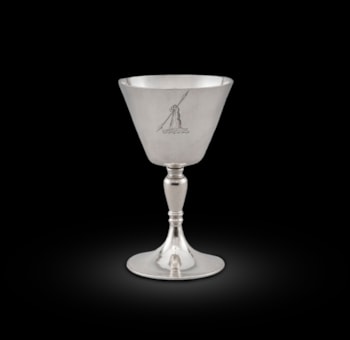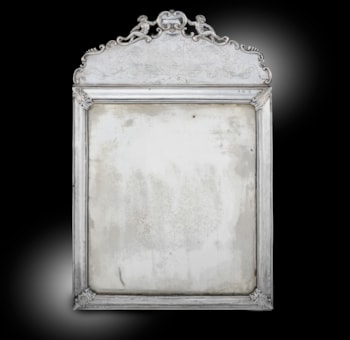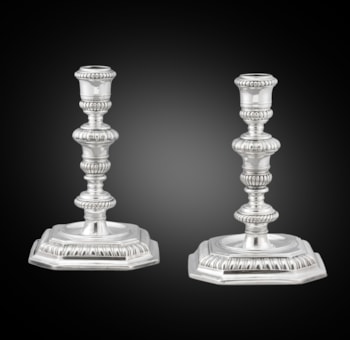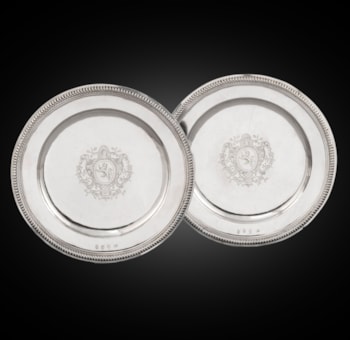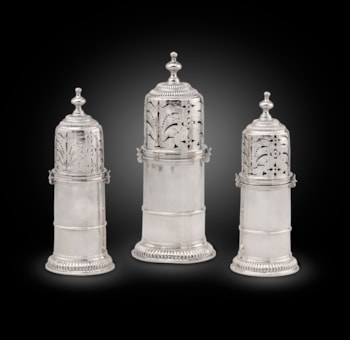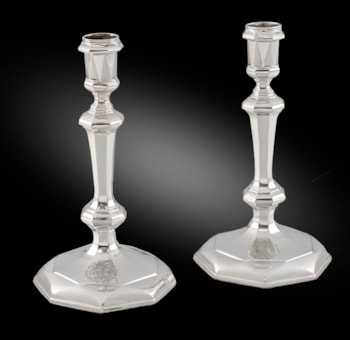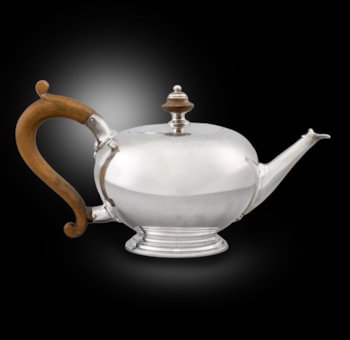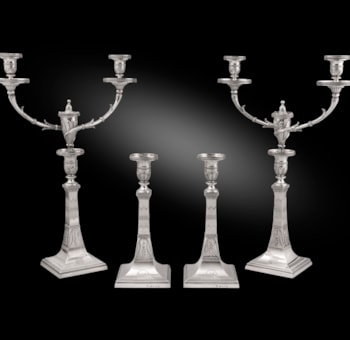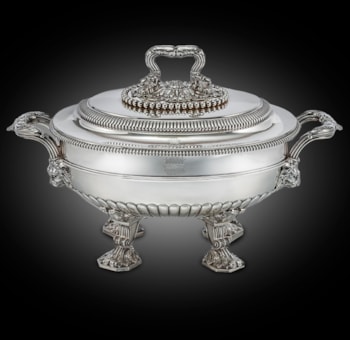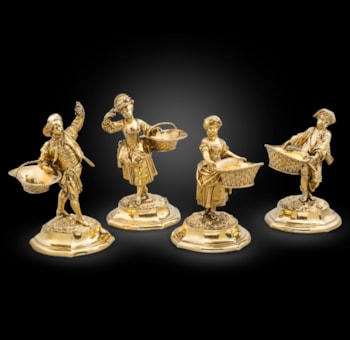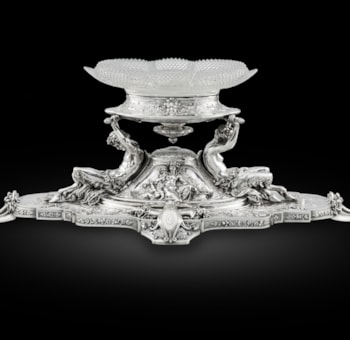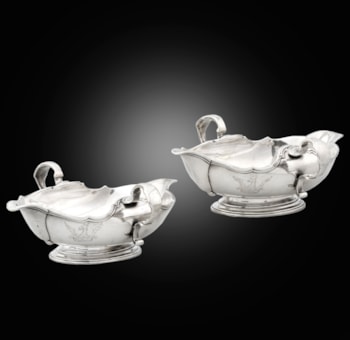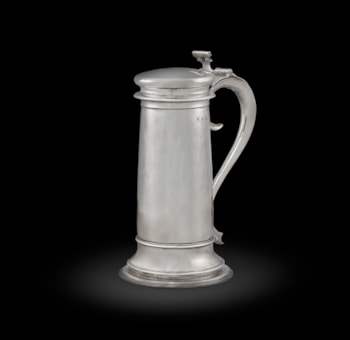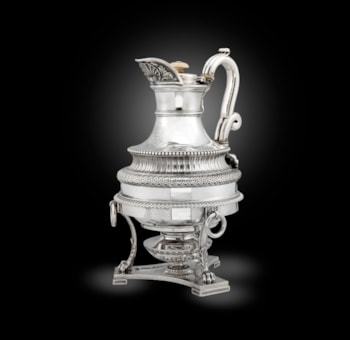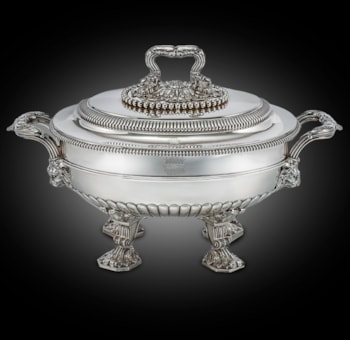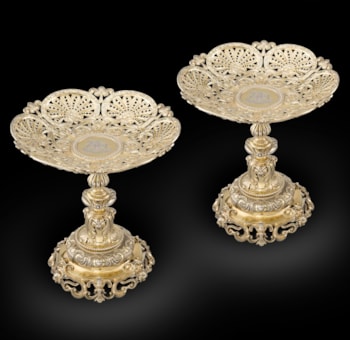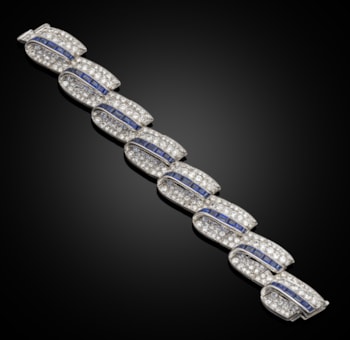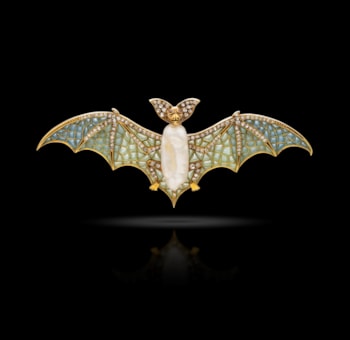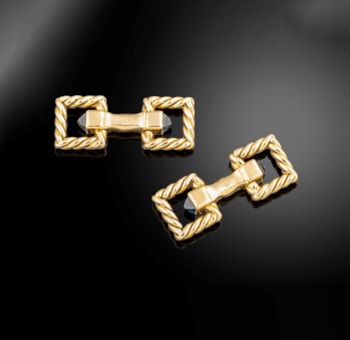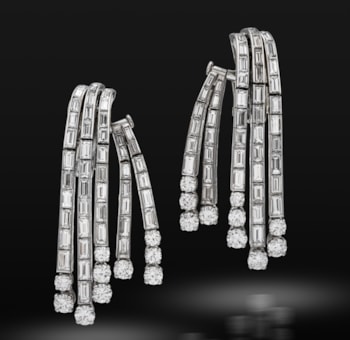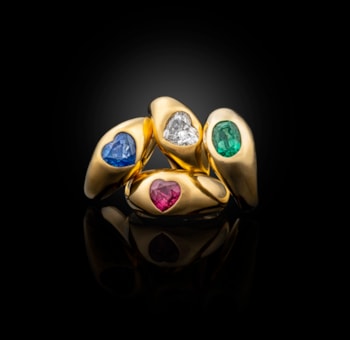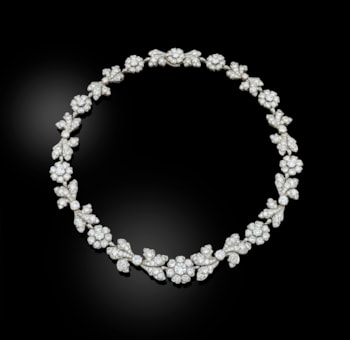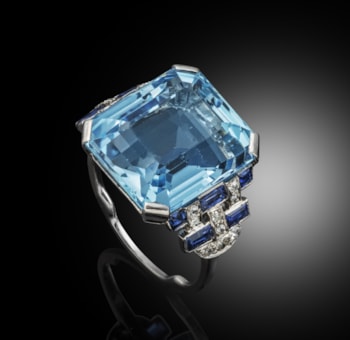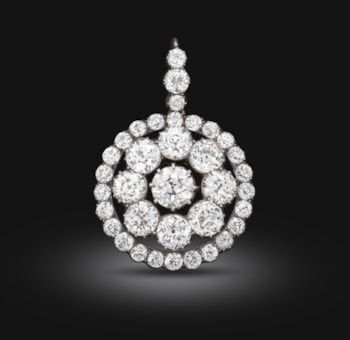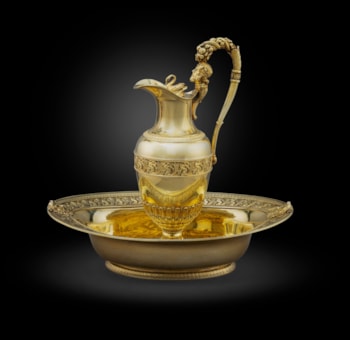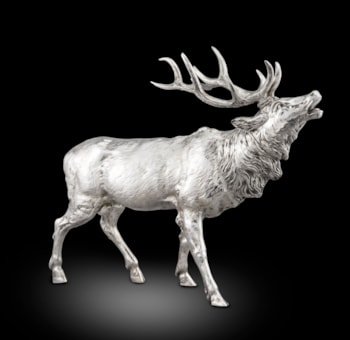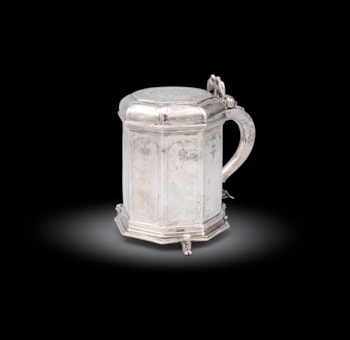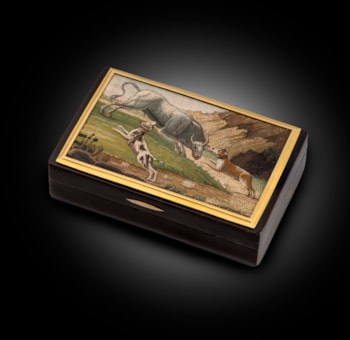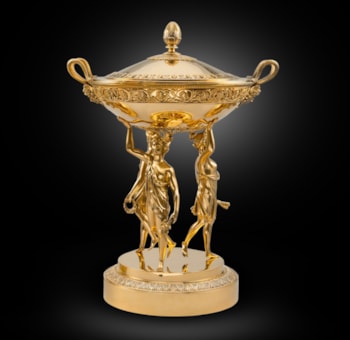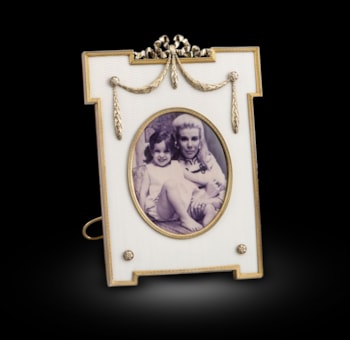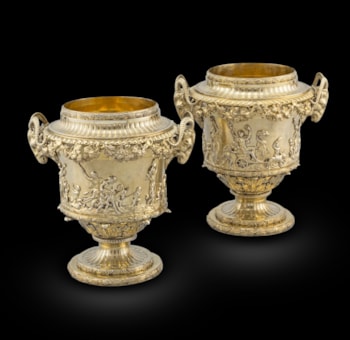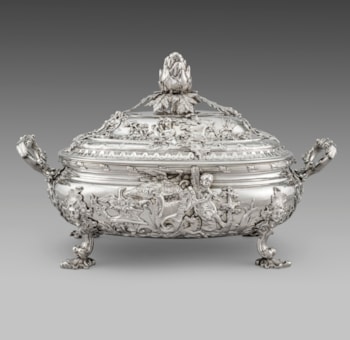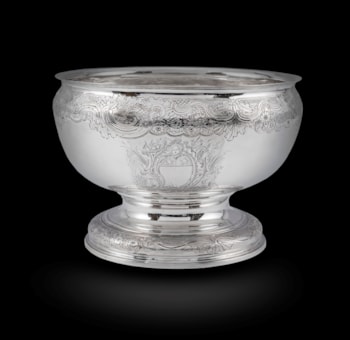An oblong inkstand, on four foliage and lion's paw feet, the sides applied with bees within foliage wreaths, the drawer front similarly applied and centred by the Imperial eagle within stylised foliage frieze, the flat top applied with two cast and chased kneeling classical female figures, each holding a horn of plenty, one the inkwell, the other the pounce pot, and with square plinth between, applied with foliage borders, winged figure of Victory and an urn containing olive and oak branches representing Peace and Victory, and with urn-shaped finial surmounted by the Imperial eagle. The plinth opens to reveal a miniature portrait by Sieurac of Letizia Ramolino Bonapart, later Madame Mère the mother of Napoleon.
This inkstand was made for Napoleon's mother, and given by her to her son King Joseph, as testified by the documents with which the object was sold, two of which are reproduced in their entirety. First, there is a certificate relative to the Encrier de l'Empereur written by one Mailliard, executor of the last will and testament of King joseph Bonaparte, and dated below: Paris, 17 September 1865: Je déclare et certifie que le grand écritorie en Vermeil, contenant le portrait de Madame Mere de l'Empereur Napoléon premier, et que possède aujourd'hui Son Allesse la Princesse Julie Bonațarle, a appartenu au Roi Joseph Napoleon, et quil s'est trouvé dans l'inventaire fait par moi à Florence en 1844'. Second, an extract from the Testament du Roi Joseph I grandfather of Julie Bonaparte] dated Rome, 16 February 1914 and signed by Lucien de Roccagiovine, reads: 1° à mon frère Lucien, je legue l'écritorie en vermeil qui me fut donné en 1812 par ma Mere, et qui renferme son portrait. (Cet écritorie qui était à ma Mere (Julie Bonaparte, pene jue de Joseph et de Lucien) m'appartient.). ' A further sheet of paper, signed by Lucien de Roccagiovine, contains this statement: Certificat relatif à l'Encrier en vermeil de l'Empereur gme vient de ma Mere la Princesse Julie.
The later provenance of the inkstand is the following.
As Lucien Bonaparte (d. 1840) died before his brother Joseph (d. 1844), it was inherited by Lucien's son, Carlo Luciano Bonaparte, Prince of Canino, who had married his cousin Zenaide, Joseph’s daughter. One of Carlo Luciano and Zenaide’s nine children, Princess Julie, married the marchese Alessandro del Gallo di roccagiovine. Their son, Lucien de Roccagiovine, was the last recorded member of the Bonaparte family to own it.
Napoleon's mother gave a similar inkstand to one of her other sons, King Jérôme, which is in the Musée de la Légion d'Honneur, Paris.
A mustard pot in silver gilt (Rijksmuseum, Amsterdam) by Odiot presents marked similarities to the inkstand. There is an identical female figure kneeling beside the jar, and feet shaped like lion paws. An identical object by Odiot, serving as a salt cellar, in gilt bronze is in the Musée des Arts Décoratifs, Paris. The type of kneeling figure seen on this inkstand, and the two examples of Odiot's work cited above, are characteristic of the ornamental and figurative repertory of the Empire period. A similar winged figure is found in an engraving for a table lamp by Percier and Fontaine from whose projects Odiot most likely derived many of his ideas.
François Juste Sieurac (1781-1832), author of the miniature, studied under Augustin. He was active in Paris as a miniaturist and lithographer from 1810 until his death. The year in which he began his career as an independent artist, 1810, is in accordance both with the Statements contained in the documents quoted at the beginning of this entry (the mother of the emperor gave the inkstand to her son Joseph in 1812) and the dates of the marks (4003-19). Sieurac executed miniature portraits of Napoleon's mother on other occasions.
Letizia Ramolino Bonaparte
Joseph Bonaparte (died in 1844)
Lucien Bonaparte (died in 1840)
Carlo Luciano Bonaparte, Prince of Canino
Princess Julie and Alessandro del Gallo di Roccagiovine
Lucien de Roccagiovine (last Bonaparte owner of the inkstand, died in 1917)
Colnaghi
Purchased by E& CT Koopman & Son Ltd in 1982
Al tajir collection until 2021
Koopman Rare Art
J.B.Hawkins, The Al Tajir Collection of Silver and Gold, London, 1983, vol.I, p.110-115 According to documents contained in the inkstand, it was the gift of Madame Mère to her eldest son Joseph Bonaparte, King of Spain. She gave a similar piece to her third son Jerome, King of Westphalia and that is now in the Musee de La Legion d’Honeur, Paris. The model for the kneeling figure supporting the inkpots appears to have been a standard Odiot model and was reused as a mustard pot in the Demidoff Service (see no.20). Following the death, in Florence of Joseph Bonaparte in 1844, the inkstand passed to Carlo Luciano Bonaparte, Joseph's nephew, and subsequently to his daughter Princess Julie.
The House of Odiot was founded in 1690 by Jean-Baptiste Gaspard Odiot. The House rose to prominence under the extremely talented Jean-Baptiste Claude, Jean Baptiste Gaspard’s grandson. He received many prestigious orders from the Emperor, including Napoleon’s coronation sword and sceptre and the Emperor’s campaign dinner service. Odiot was particularly influenced by the antique style and created lavish displays in silver-gilt. Odiot’s reputation spread beyond the Empire to all the courts of Europe.
You May Also Like




